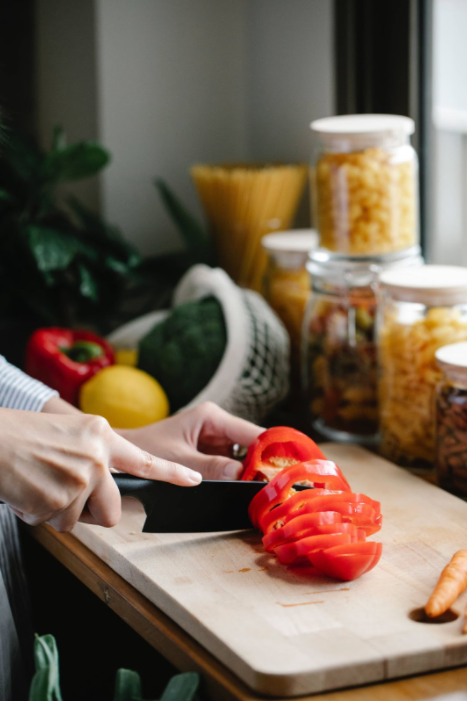
The Different Types of Peppers and Their Uses
Share
No one loves a good pepper as music as we do here at Pepper Jelly. Raised on Grandma Jones’ original recipe for pepper jelly spread, generations of the Jones family have grown with a deep abiding passion for all things spicy, savory, and sweet.
If you share our passion, you probably know that there are a lot of different kinds of peppers out there, each with its own unique flavor profile, spice rating, and ideal culinary use. With that in mind, we teamed up with some friends in the world of home cooking, gardening, and food science to put this helpful guide together, detailing the most popular peppers on the market today.
Give these peppers a try the next time your cooking needs a little kick, or better yet, try one of our many varieties of Pepper Jelly made from fresh bell peppers, jalapenos, and habaneros!
Understanding the Scoville Scale of Spiciness
Before we get into the intricacies of the peppers themselves, one thing you should know about is the Scoville scale and how it related to the ingredients we’re going to discuss.
"The Scoville scale measures the spiciness of chili peppers. Values are given in Scoville Heat Units (SHU),” explains Bjorn Kvaale, founder of hitechgardening.com. Created in 1912 by pharmacist Wilbur Scoville, who devised a method for quantifying pepper pungency.
As known by anyone who’s ever had their eyes water after biting off a bit more than they could chew, Kvaale is quick to point out that all peppers are created equal.
“While some people may think a jalapeno pepper (2500-10,000 SHU) is hot, the scale goes all the way up to 3,000,000 SHU (e.g. the Carolina Reaper or Dragon´s breath chili peppers).”
9 of the Most Popular Peppers to Cook With
Hot!

By far the most common variety of pepper is the Bell pepper. With a Scoville rating of 0 SHU, Bell peppers are also the mildest, tasting more sweet than spicy (which is why we use them for our Traditional Pepper Jelly).
“Bell peppers help to add moisture to food because they have a high water content,” says Mya Bellinger of rarereadmission.org. “They also help to add color.”
“Fun fact,” Kvaale adds, “Did you know that Vell peppers first turn green, then yellow, then orange, and finally red? Since the red peppers have been on the vine the longest, they are most nutritious, but also cost the most."
A step up from the humble Bell peppers is the bright yellow Banana pepper, which has a Scoville rating of 0-500 SHU. That’s just enough to give them a tasty tang, which Rudolf Probst of audiologyresearch.org suggests makes them a perfect ingredient for deli-style sandwiches and subs.
For those looking for a little more heat, but not too much, Probst recommends the Piquillo pepper. With a 500-1,000 SHU rating, Piquillo peppers are often pureed for use in sauces, but Probst has another way of enjoying them. “Stuffed with cheese, baked, and eaten as hors d'oeuvres,” Probst says, Piquillos make for a tasty snack.
Hotter!

Next to the Bell Pepper, the Jalapeno pepper might be the second most famous variety of pepper, showing up in everything from tacos and BBQ to soups and salads (and, of course, Grandma Jones’ Jalapeno Pepper Jelly). Sporting a SHU of 2,500-8,000, it’s got a good kick, without being overpowering.
“Jalapeno peppers are especially good in jalapeno poppers with smoked gouda,” Bellinger says, “and on Jalapeno cheeseburgers with bacon and grilled onions.”
Similar in taste to the earthy and semi-sweet Jalapeno, but significantly hotter, theSerrano pepper boasts a 5,000-15,000 SHU rating. Because of the closeness in flavor, Probst recommends Serranos as a spicier replacement for Jalapenos.
“They’re commonly used in Thai and Mexican dishes,” Bellinger adds. “They’re also good in tomatillo salsa.”
If that’s still not enough heat for you, though, there’s always the Cayenne pepper, with its 15,000-20,000 SHU rating. One of the main ingredients of Tobasco sauce, Bellinger suggests utilizing Caynennes to cook “sweet and spicy bacon” or as a sauce for fettuccine.
Hottest!

Okay, now we’re entering red-face, sweaty-forehead, someone-please-pass-me-the-milk territory. With a SHU rating of 50,000-100,000, the mildest Piri Piri pepper is still a full 20,000 points hotter than the hottest Cayenne. That, Probst says, makes them ideal for African and Portuguese dishes, but may be too hot to handle for unsuspecting eaters.
Things only get spicier from there, however, with the Cumari pepper rating 50,000-300,000 SHUs. Richard Lubicky, founder of RealPeopleSearch, describes the Cumari as “very spicy and slightly bitter.”
“Cumari peppers range in color from yellow to intense red,” Lubicky continues. “They can be used in soups, sauces, and stews.”
Finally, that brings us to one of the hottest peppers that people actually enjoy eating (we’re not counting peppers that only exist as “challenges” here), the Habanero pepper. Similar to the Cumari, the Habanero has a SHU rating of 100,000-350,000 SHU. Because of their high level of spice, Habaneros are often used as an ingredient in chillis, hot sauces, and salsa.
They’re also what we use to jazz up our Cranberry Habanero Pepper Jelly, the perfect choice for fearless foodies of all kinds.
Pepper Jelly Brings Sweet & Spicy Together
Whether you’re looking for a tiny tingle or a tongue-torching triumph, sweet ‘n’ spicy Pepper Jelly is what you need to satisfy your piquant palate. Taken straight from Grandma Jones’ long-secret family recipe book, we’re happy to share this delicious and distinctive dish with you.
Use it as a condiment, spread, dip, marinade, or ingredient; there’s no end to the culinary possibilities of Pepper Jelly. Try it today and see for yourself!
